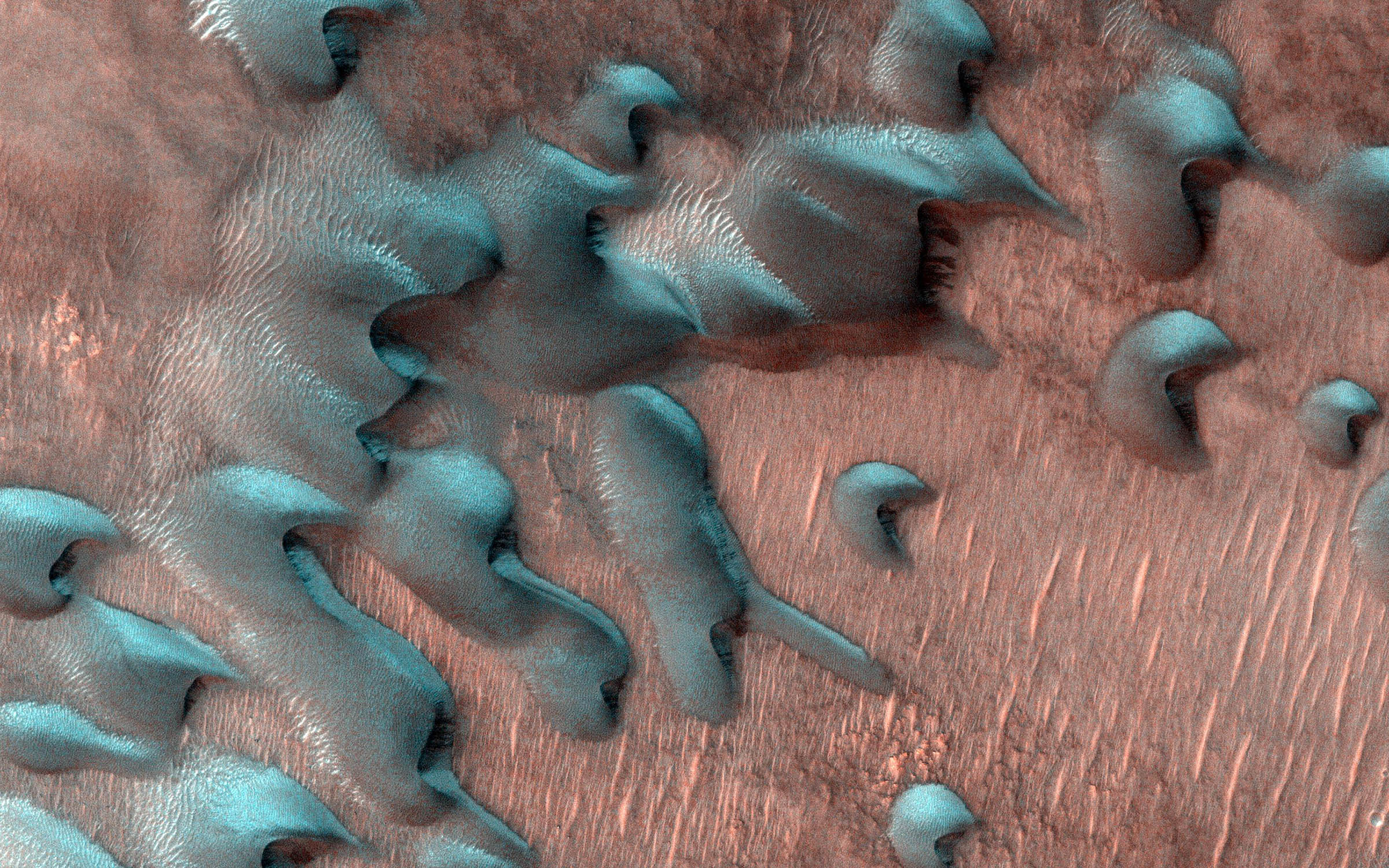Despite being further from the Sun, winter on Mars isn’t much different from winter here on Earth, NASA says. The space agency released a new video in which it details how snow falls on the Red Planet and how ice and frost form on the Martian surface. Despite the similarities, though, there are also some key differences.
For starters, NASA says that Mars has two types of snow. The first type is what you’d expect to find here on Earth: Snow made of frozen water. As the Perseverance rover explores Mars in late winter, NASA says that snow continues to fall in places we can’t explore just yet. However, this first type of snow turns from a solid directly into a gas before it even touches the ground.

It’s an intriguing change caused by the planet’s thinner atmosphere. The second type of snow found on the Red Planet’s surface is dry ice. This carbon dioxide-based ice can land on the surface, and NASA says that winter on Mars tends to see at least a few feet of this dry ice snow falling in the flat regions near its northern and southern poles.
Sylvain Piquieux, a Mars scientist working at NASA’s Jet Propulsion Laboratory, says that these snowy areas can get so deep that you’d need snowshoes to cross them. And, if you wanted to ski on Mars, you would need to go into a crater or cliffside. As noted above, though, we’ve never actually seen these phenomena from the ground, as no rovers are in the areas where snow falls during winter on Mars.
However, with more missions to Mars looking to study those northern and southern poles, it’s likely we could see a rover capturing footage of snow falling on the Red Planet somewhere down the line. Of course, there are plenty of other missions to worry about before that, including a manned mission to Mars in the 2030s, as well as NASA’s Mars sample return mission.
As if to punctuate how cool winter on Mars would be, NASA also shared several photos of thawing frost captured by spacecraft exploring the Red Planet, including the Odyssey Orbiter, which entered Mars’ orbit in 2001 and has delivered beautiful images of the Red Planet since. No matter how you slice it, though, winter is a cold time to explore the Red Planet, with low temperatures reaching minus 120 degrees.








